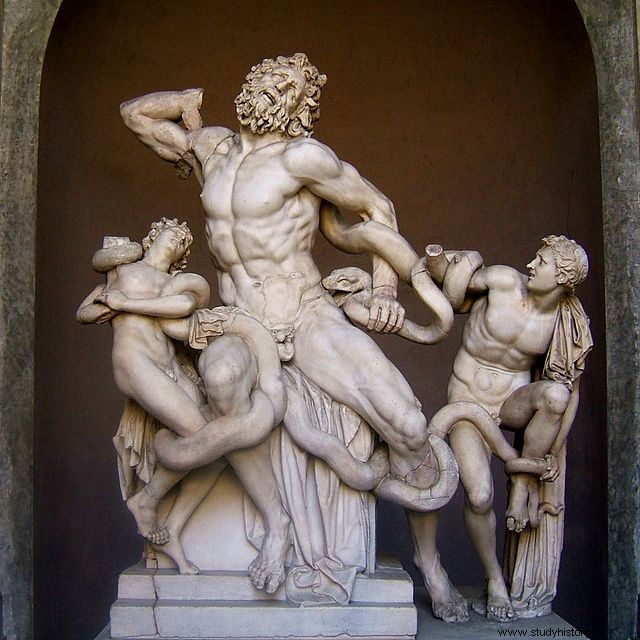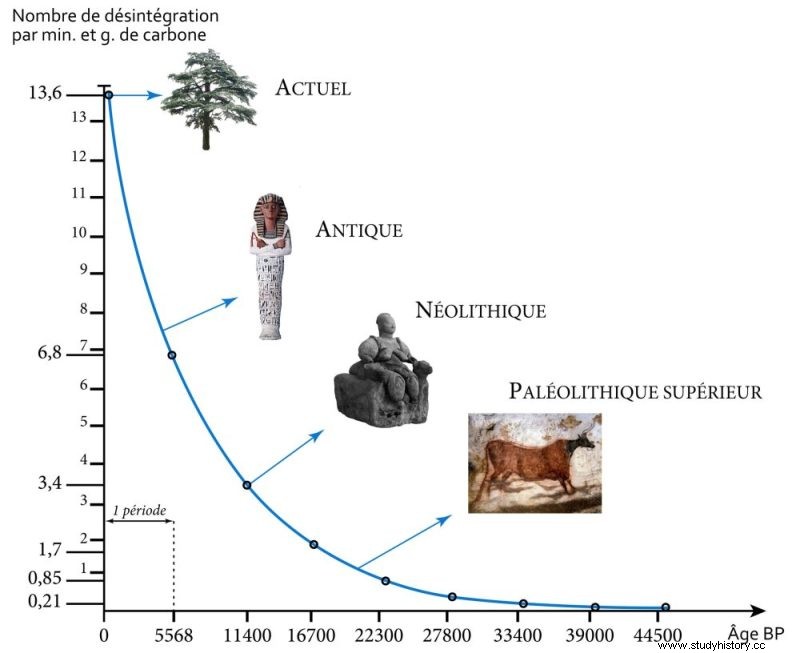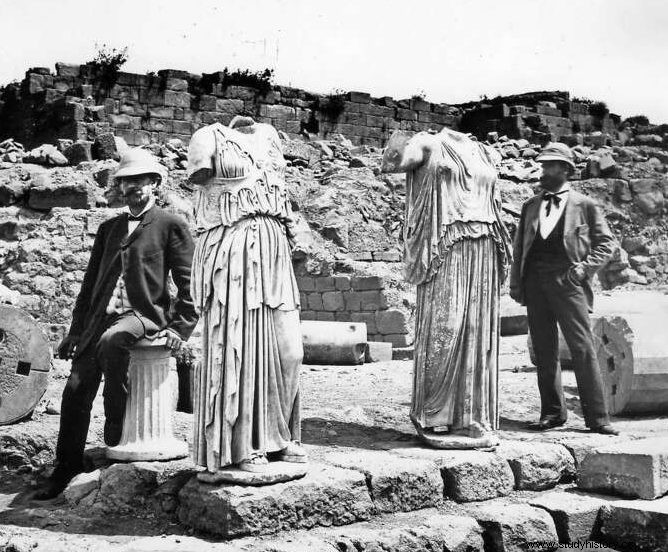"Suppose Sparta were devastated and only the temples with the foundations remained:after a long time its power would raise, I believe, in relation to its renown, serious doubts among future generations". (1)
The warning of the Athenian historian Thucydides is clear:between the legend told, even altered through the centuries and reality, a gaping gap can surprise everyone. And, as we will see, archeology – now a scientific discipline – has undergone transformations in the way it studies and analyzes the past.
Let's discover today several key dates that have made this fledgling discipline with questionable biases, a rigorous scientific method with many prerequisites. A long road has been necessary to get where she is, knowing full well that the moult is still far from over. Will it be one day?
To be convinced of this, it is necessary to place security markers:the choice of a founding year is somewhat biased and would not necessarily win unanimity. While obviously the search for the past through ancient monuments and texts has often been used to establish legitimacy in a given context, the 16th century has the merit of laying down a precise and detailed record of our subject.
The remains of Rome
In 1573 , it can be said without pretension that a first facet of archeology (in its modern acceptance) was born in Rome. Indeed, the popes will prohibit the destruction of the remains exhumed in the nooks and ancient basements. This is how the Vatican will appoint a Commissioner for Treasures, Antiquities but also for Mines. From the outset, it is interesting to see that archeology is a method of rescue, failing to analyze or even to contextualize:the course of action has been launched, we must begin to preserve even though the methods used could surprise our days.
The discoveries will be made at the pace of the urban development work. Much earlier at the start of the century, the Laocoön group (2), a Roman copy of a Hellenistic bronze (40/30 BC), was discovered in 1506. The masterpiece of the Antiquity could not leave indifferent indefinitely.

Roman emulation will gradually take place alongside other European countries. If Jean-Baptiste Colbert is known as Louis XIV's trusted minister with his important economic policy which contributed to increasing the influence of France, he was also a jack-of-all-trades, particularly in the field of "preservation". In 1663 , he decides to create the Academy of Inscriptions and Belles Lettres responsible for collating texts on monuments and more generally on objects, trinkets and manuscripts of the past.
All this is not going to risk it:a few decades later - under the reign of Louis XV -, the abbots François Sevin and Michel Fourmont are sent to Constantinople and Greece with the aim of collecting Greek manuscripts. If the intention is laudable, the excavation process will become detrimental, because Father Fourmont will carry out destructions as well as many mystifications. He himself will provide the reason for his actions:
“It is a marble quarry that I have to search without scruple. If by overthrowing its walls and its temples, if by not leaving one stone on another […], its place will subsequently be ignored. I only had this means to make my trip to the Morea illustrious, which would otherwise have been completely useless, which does not suit either France or me. » (3)
To find out more on this subject:Fantasy ancient Greece:from myth to historical reality
The first scientific approaches
In 1784 , in Arles, in the most famous Gallo-Roman city, the first French Archaeological Museum is created. The passion will then reach England, where individuals are, among others, cabinets of curiosities. But what exactly?
They appeared during the Renaissance, in the second half of the 16th century, to form a set of heterogeneous objects, first out of curiosity and then out of a desire to better grasp the infinite diversity of a world with complex ramifications. Initially elitist, the classification of stuffed animals, trinkets, ethnographic ornaments or crystalline minerals will increase for prosaic reasons:at a time when the discovery of the world is not accessible to everyone, these cabinets of curiosities will serve as small museums.
Until then, many ecclesiastics and notables gathered these treasures for aesthetic purposes or as part of encyclopedic projects. But carelessly removing an object from its place of discovery leads de facto a loss of elements necessary for its understanding in a given environment. Its progress, the possible degradations along the way or the bad interpretation will give to the public but also to the specialists of the erroneous data, inevitably misunderstood.
“”Even today, errors and/or ideological intentions remain on the perception of Greek Antiquity through art. Here, a textbook depicts, it is said, a “beaten slave”. In reality it is an Egyptian (perceived as such) with circumcised sex. In the manual, everything is modestly erased and the caption distorted.“” (4)

Some voices then rise against the practice and the way of prospecting on historical sites. In 1794 , Abbé Grégoire denounces vandalism and recommends the preservation of all ancient objects and sites. The historian Legrand d'Aussy puts forward the idea of a systematic inventory of discoveries. He won't stop there.
He proceeds in stages, first in the drafting of an inventory, makes a census of antiquities by region and organizes a list of excavations by hierarchy of importance. Finally, he implements precautions against the possible theft of precious objects by the workers. Behind this centralized aspect, respect for the private property where the excavation is located is therefore no longer guaranteed.
To avoid disappointments on the authenticity of the research, he applies seals, keeps a report on the work in progress and directs the procedure by calling on specialists (chemist, anatomist, etc.). The multidisciplinarity of an investigative field study will not really be acquired until decades later, but the scientific progress there is already considerable.
A first chronological classification of the burials of the first ages is slowly beginning to be put in place. Finally, it demands that the excavation procedures which have made it possible to exhume an area should not be destroyed, thus integrating a conservation policy and public education on this subject. The exhibition of a large number of pieces will become systematic. Museo-graphic clues will be imagined there (mannequins to present the costumes and jewelry, etc.). (5)
In 1822 , archeology requires the deciphering of ancient scriptures. Jean-François Champollion achieves this with the hieroglyphs of the Rosetta Stone brought back by the Egyptian expedition.
First to decipher the hieroglyphs and father of Egyptology, the great author Chateaubriand said of Champollion:“His discoveries will last as long as the immortal monuments they have made known to us”. A year after its discovery, the richly illustrated work “Egyptian Pantheon, collection of mythological characters from ancient Egypt, according to the monuments” introduces us to Egyptian mythology to an amazed public. (6)
The excavations of historical sites, amplified by the stories and writings of ancient authors, will give us welcome surprises, like the city of Pergamon. The German archaeologist Carl Humann will use his influence to prevent the destruction of the marble ruins partially exposed in the lime kilns. For more on this subject:Carl Humann, the man who saved Pergamon.
Carl Humann (left) and Richard Bohn in front of the halls of the Sanctuary of Athena with the statues of Athena and Hera.
Modernity against the ravages of time
If the 19th century was the century of important archaeological discoveries, they often took place in a context of multiple spoliations and rivalries against a backdrop of geopolitical issues. Many of the regimes that will follow the beginning of the following century, known as great ideologies, will go so far as to fantasize origins and affiliations that are grotesque to say the least.
Then will come two considerable modern scientific advances. In 1937 , the Briton Mortimer Wheeler invented grid excavations. The land is divided into equal squares separated by benches, or berms, which are not touched:they will make it possible to read the succession of layers, or stratigraphy. It is no longer just a question of collecting objects but of understanding, thanks to the remains, the human organization of the space studied.
In 1947 , the American chemist Willard Frank Libby, who worked in the Manhattan project to build the atomic bomb, develops carbon-14 dating. How does it work?
Atmospheric carbon dioxide must therefore contain very small amounts of carbon-14, which enters the carbon and carbon dioxide cycles and from there into the food chain by assimilation by plants and animals. When a living organism dies, the incorporation of carbon-14 ceases, and the amount that is then present decays at a rate given by the laws of radioactive decay.
By comparing – using particularly sensitive instruments – the quantity of carbon-14 present in old samples (fabrics, wood, mummies, etc.) and that given in recent samples corresponding to similar objects, we can calculate the time elapsed since the end of the assimilation of carbon 14. This method, tested with objects whose age was known, then proved to be very reliable. This tool gives effective results on materials of the order of 5,000 years old and still relatively relevant up to 50,000 years old. (7)
Today, so-called modern archeology is less interested in ancient texts to focus more on research directly in the field. Many disciplines agglomerate and more advanced techniques such as micromorphology (which makes it possible to study the layers of sediments in the laboratory) or even the DNA study of the sediments makes it possible to collect valuable information on the excavation site. Remember that archaeological excavation is a destructive process in essence.

(8)
Return to Greece
We are now in 2021 . A major excavation on the island of Euboea (Greece) brought to light the remains of the temple of Artemis Amarysia. We will review how the search was carried out.
A sanctuary sought after for a century, it was only officially found in 2017 by archaeologists from the Swiss School of Archeology in Greece. First of all, the critical study of ancient texts allows us today to avoid an approach that is too literal. This is where Denis Knoepfler, honorary professor at the Collège de France, comes in.
The writings of two ancient geographers, Strabo (1st century BC) and Pausanias (2nd century AD), confirmed the existence of the sanctuary in question. Strabo's work holds his attention, but he notices that an error has crept into the number of "stadia", the unit of measurement of the time. Two letters look alike (“ζ” and the “ξ”), hence a localization issue. Was it a copyist's sight problem? We do not know it. After trial and error in the field in 1969, this correction of the text made it possible to present a solid hypothesis in 1988 and, in fine , will be confirmed in 2017 with the discovery of a tile with the inscription "Artemidos" (possession of Artemis) in the new location indicated.
An archaeological site is also subject to contemporary news, and that of Amárynthos is no exception to the rule:the measures against Covid-19 and the catastrophic fires during the summer of 2021 have in no way helped prospecting within from Euboea. In addition, in order to be able to carry out research in Greece, it is necessary to acquire land and means. Geophysical surveys were carried out to examine anomalies in the elevations.
A stroke of luck in 2006:an ancient block had been illegally moved during the construction of a villa in this area. In 2007, the last day of the excavations, a trowel blow revealed the monumental foundations in the stratigraphy of a survey. The work was nevertheless stopped for reasons of private property. Far from leaving everything flat, we had to fill in the holes made and take our troubles patiently. The team analyzed the evolution of the ancient landscape. To do this, it was necessary to return once again to ancient sources:the sanctuaries of Artemis are generally located on the edge of marshes. The idea germinated to tackle the search for ancient marshes using coring to delimit the space of the sanctuary.
Back on the site in 2012, there was still no formal confirmation of the Sanctuary of Artemis Amarysia. Numerous buildings were cleared over several square kilometers up to the famous tile, in addition to inscriptions found nearby. Chronological research has made it possible to understand that the temple had been destroyed and rebuilt:thus two temples were superimposed. If the destruction of the blocks, marbles and statues disappeared (in the lime kilns), the reuse in the Byzantine period to rebuild houses and chapels also left the temple bare. Fortunately the foundations (layers, deposits and pits) have been preserved. (9)
Six hundred objects are thus offered to us:terracotta and bronze containers, painted terracotta figurines, a helmet and a shield, jewelry in gold, silver, earthenware, glass and semi-precious stones or seals in form of beetles. It will now be necessary to carefully study and restore these objects, several long years in perspective... One day of excavation requires twenty days of study. Archeology is definitely a science that requires patience.


Seated woman terracotta figurine, Artemis Amarysia shrine
Sources and references
- 1) Thucydides, the Peloponnesian War
- 2) Vatican Museum
- 3) French archaeological missions in the East in the 17th/18th centuries (via the digital library of the National Library of France)
- 4) Vase of the painter of Pan, dated 470 BC. See Conference by François Lissarrague “Image and history:the choice of painters (Athens, 6th-5th c. BC)”
- 5) Prehistoric France from 1789 to 1941, by Arnaud Hurel
- 6) Egyptian Pantheon, collection of mythological characters from ancient Egypt, according to monuments (via the digital library of the National Library of France)
- 7) Universalis
- 8) Illustration:CIRAM
- 9) Uniscope
- – Historia, Larousse.

